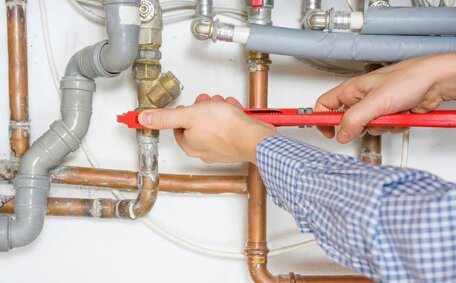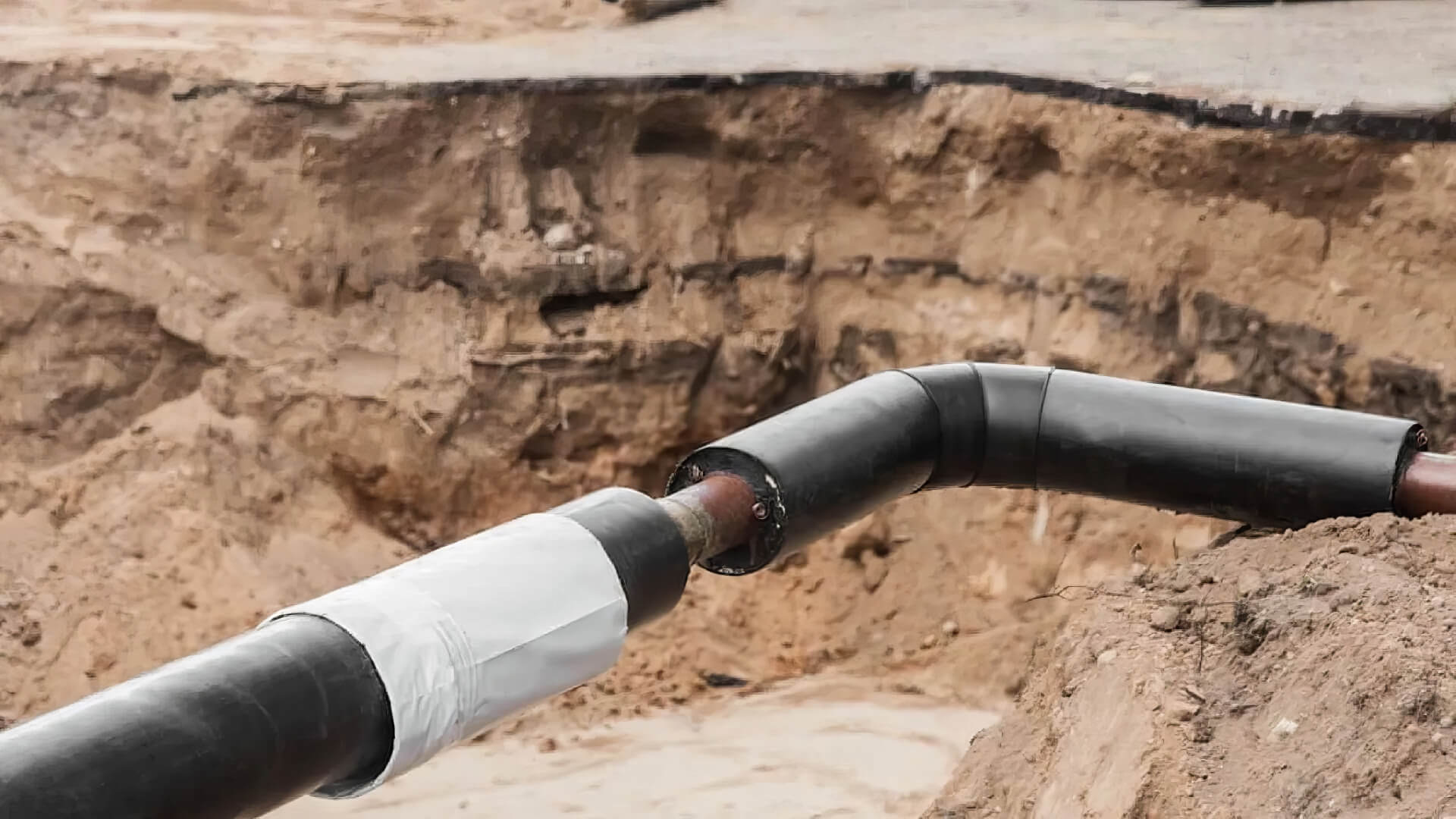
What’s involved in upgrading your gas meter?
Upgrading your gas meter is a simple process completed by qualified technicians. It involves disconnecting your gas supply for 15 minutes to swap the meter. Contact us today for a quote.
Read MoreWhen installing a gas pipeline system, most homeowners don’t consider how long it is expected to last. However, being aware of the typical gas pipeline lifespan and signs of ageing can help you stay on top of necessary maintenance and plans for eventual replacement.
Industry standards indicate that a properly installed and maintained gas pipeline has an average lifespan of 50 years. This article will examine those variables in depth, provide tips on identifying issues through visual pipeline inspection, and outline financial and legal considerations for gas pipeline discontinuation or replacement.
However, many factors can shorten or extend that timeline significantly.
Most gas pipelines installed today are designed and built to last approximately 50 years under normal operating conditions. This lifespan expectation is based on the materials and construction methods used, as well as assumptions about pipeline pressure, gas composition, and environmental factors.
While 50 years is the standard target lifespan, many pipelines will operate safely for longer periods with proper maintenance. However, lifespan is ultimately limited due to internal and external corrosion over time, as the pipeline would no longer withstand the continuous high-pressure operation.
A variety of elements can accelerate or delay ageing, including pipeline materials, burial depth, soil acidity, moisture levels, and more. Regional climate conditions also play a major role. Later sections will examine these variables in detail.
There are several key factors that can limit the longevity of a gas pipeline or accelerate its ageing:
In areas like Mortdale, Sydney, key concerns would be soil moisture, stormwater runoff erosion, damage from nearby construction, and bushfire risk. Regular maintenance and inspection is crucial to maximise lifespan by identifying and addressing issues early.
Corrosion poses one of the most significant threats to buried steel gas pipelines. It is essentially the gradual eating away of metal caused by a chemical reaction when exposed to moisture and oxygen.
Without preventative measures, corrosion can lead to leaks, explosions, loss of product, and environmental contamination. Over time, pervasive corrosion compromises pipeline integrity and shortens operational lifespans. It typically constitutes over 60% of pipeline failures.
To monitor corrosion, standards in Mortdale dictate regular inspection of pipeline surfaces and measurement of metal loss. Common prevention methods include protective coatings and linings, burial depth specifications, and cathodic protection systems to counter electrolytic corrosion.
By strictly following corrosion prevention best practises and testing for emerging issues, the gas pipeline distribution network in Mortdale aims to maximise longevity despite the area’s moist, acidic soil.
The composition and acidity of soil can significantly impact underground pipeline corrosion rates. The clay-based soils prevalent in Mortdale and the Sydney area tend to be highly acidic. As pipelines corrode faster in acidic conditions, this reduces average lifespan expectations.
Moisture is another concern, as excess water accelerates metal deterioration through electrolytic corrosion. Mortdale’s high rainfall and stormwater runoff means keeping pipes dry is challenging.
Vegetation also plays a role. Invasive shrubs and tree roots can penetrate protective pipeline coatings, provide moisture access, and if not managed, the pipeline would even physically rupture. Areas with bush encroachment require more vigilant monitoring and maintenance to prevent or limit damage.
Strict standards govern allowable vegetation proximity for new pipeline installations. However, changing environmental factors over decades means threats can emerge. Trees and shrubs that pose risks should be identified and removed through pipeline right-of-way maintenance.
The materials used to construct a gas pipeline significantly influence its durability and lifespan potential. Most modern gas distribution lines are made from polyethylene plastic or protected steel. Polyethylene is corrosion-resistant, flexible, and cost-effective, though less durable for high-pressure transmission mains.
Stainless steel pipelines boast exceptional toughness and fracture resistance. But they remain susceptible to corrosion over time when buried underground. So external pipeline coatings and wrappings, like fusion-bonded epoxy or polyethylene tape, help prolong steel pipe lifespans through moisture protection.
Legacy pipelines, installed years ago and comprising bare steel, cast iron, or wood blocks sealed with rawhide, represent the highest decay and leakage risks. These obsolete materials lack modern safeguards against corrosion, erosion, fractures or loosening joints. As they continue to age well beyond original lifespan estimates, extensive maintenance is critical to prevent catastrophic failures.
Technology advancements allow improved materials, protective measures, and construction techniques that extend operational lifespans. But regardless of composition, regular inspection and servicing remains essential to identify and address damage early.
Regular maintenance and inspection represents a crucial investment to extend ageing pipeline lifespans. Industry best practises dictate annual visual examinations and leak surveys using gas detection equipment.
Technicians check pipeline surfaces for corrosion damage, coating issues like cracks or tears, loose fittings/joints, or ground shifts affecting buried pipes. Any observed defects can then be addressed through repairs, reinforcements or corrosion protection enhancements before serious problems emerge.
Data gathered guides maintenance decisions regarding repairs, pressure reductions, or reinforced leak monitoring in deteriorating sections.
Smart pipeline pigs examine wall thickness and internal corrosion. Cleaning pigs remove liquid buildup and debris. More intrusive inline inspections also occur on longer transmission mains.
Ongoing maintenance cannot prevent gradual pipeline degradation forever. But by slowing corrosion and enabling damage identification/resolution, it safely extends the operating lifespan for decades past initial longevity estimates.
Ultimately, economics determine replacement timeframes. But with comprehensive upkeep programmes, ageing steel distribution piping in areas like Mortdale often operates reliably for over 70 years before requiring renewal.
There are several clear signs that indicate when an ageing gas pipeline should be considered for replacement:
For professional advice regarding gas pipeline replacement needs and services, contact the licenced technicians at Mortdale Plumbing on 1300 349 338 or [email protected]. Timely replacement of degraded pipelines is crucial for continued safe operation.
Once a gas pipeline has reached the end of its operational lifespan and replacement is warranted, proper decommissioning procedures must occur before abandonment.
Decommissioning involves permanently isolating the pipeline by purging all natural gas and inert gases using air, then capping or sealing off all open ends. Above ground structures like valves and vents are dismantled and removed. The pipeline company must notify relevant authorities once decommissioning is complete.
Abandoned pipelines are usually left buried, as removal can be complex and disruptive. However, completely extracting the pipelines is preferable to prevent soil subsidence and allow surface reuse. Pipelines emptied of gas pose minimal safety risks if capped securely.
Before abandoning a pipeline traversing private land, owners should review easement terms and contact the pipeline company regarding any restrictions. While the land can typically be reused, construction over abandoned pipelines may be prohibited. Check state guidelines regarding legal requirements before any development.
The accelerating shift towards renewable energy sources is impacting long-term gas pipeline lifespan projections and infrastructure investment decisions. As sustainability policies incentivise cleaner energy adoption, forecasts predict natural gas demand will plateau by 2030 before declining.
Western Australia’s Dampier-to-Bunbury pipeline had its operational life expectancy shortened by 20 years, from 2055 down to 2035. The pipeline owner cited reduced domestic gas consumption and energy policy changes like carbon pricing making gas less competitive.
With lower gas usage expected earlier than previously predicted, maintaining costly pipeline infrastructure becomes less economically viable. New installations may emphasise modular or relocatable materials to enable repurposing or relocation if throughput volumes drop. Existing networks face potential earlier decommissioning.
Ultimately, pursuing renewable energy targets to reduce emissions will likely shorten actual lifespans relative to initial technical estimates for long-distance transmission pipelines and local distribution networks.
There are several legal responsibilities and considerations for landowners regarding gas pipelines crossing their properties. Understanding these is crucial to avoid potential liabilities.
In most cases, easement agreements between the pipeline owner and landowner dictate maintenance obligations and access rights. Landowners must allow corridor access for routine servicing or emergency repairs. They’re typically prohibited from building permanent structures over pipelines or impeding maintenance activities.
However, landowners retain rights regarding surface usages like agriculture or fencing within pipeline easements, provided such installations don’t interfere with reasonable pipeline maintenance. Certain activities like excavation or drilling require prior approval to prevent damage.
Landowners are also responsible for monitoring pipeline conditions on their properties and reporting emerging issues like leaks or coating damage to the asset owner. Proactive identification of corrosion or vegetation risks helps maximise pipeline lifespan through early interventions.
When pipelines ultimately require replacement, landowners should review easement terms regarding decommissioning, removal vs abandonment in place, and site restoration obligations. The pipeline owner typically covers disposal expenses but may pass on repair costs for damage caused by landowners to the retired pipeline.
For advice navigating gas pipeline easements, maintenance rules, lifespan considerations and legacy land agreements, contact the industry specialists at Mortdale Plumbing on 1300 349 338.
Upgrading your gas meter is a simple process completed by qualified technicians. It involves disconnecting your gas supply for 15 minutes to swap the meter. Contact us today for a quote.
Read MoreWe use only the most durable, long-lasting and eco-friendly pipe relining materials such as PVC and epoxy resin to repair pipes without excavation.
Read MoreChemical drain cleaners contain toxic chemicals like sulfuric acid and sodium hydroxide that can damage pipes, disrupt septic systems, and harm humans if inhaled or make contact with skin. Avoid chemical drain cleaners and call Mortdale Plumbing at [phone] for safe, eco-friendly drain cleaning.
Read MoreMortdale, 2223 NSW
We will call back as soon as possible.




